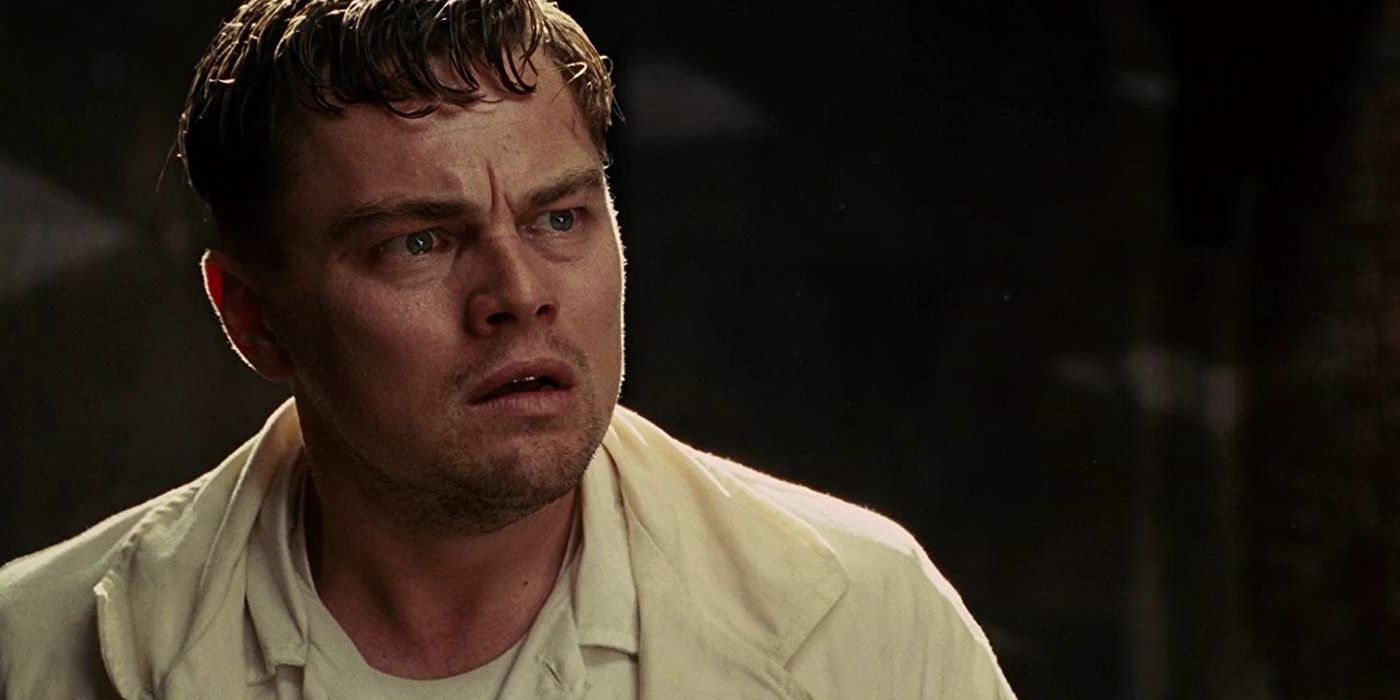Martin Scorsese’s 2010 adaptation of Dennis Lehane’s bestselling psychological thriller Shutter Island changed the original novel’s ending, but how did the movie Shutter Island‘s ending change the original and why was the change made? Released in 2003, Mystic River writer Dennis Lehane’s Shutter Island is a chilling mystery with a bombshell final twist that re-contextualizes the entire preceding narrative.
The story of a US Marshall sent to investigate the treatment of criminally insane patients in the titular offshore institution, Shutter Island is a paranoid and claustrophobic story of a troubled antihero trying to uncover the truth no matter how disturbing it is. And by the time US Marshall Teddy Daniels does uncover the terrible truth behind the eponymous island, the revelation is one that casts the novel’s entire story in a new light.
In 2010 a movie adaptation of Shutter Island was released starring Leonardo DiCaprio as Teddy and directed by Cape Fear helmer Martin Scorsese. The movie adaptation received rave reviews but changed the ending of the novel in one small but notable way. Lehane’s original novel ends with the reveal that (spoilers, obviously) Teddy isn’t actually investigating Shutter Island, he’s a patient in the facility who was sent there after murdering his wife and children.
His shattered psyche has been unable to deal with this reality, but the institution’s staff go along with his delusional belief that he is investigating the island in the hopes of helping him deal with and eventually accept the trauma. However, by the novel’s end, Teddy’s condition hasn’t improved despite these attempts, leading the institution to lobotomize him. In the movie, however, it is heavily implied that DiCaprio’s Teddy does know the truth — but he’s choosing to be lobotomized as he can’t face the guilt of what he’s done.

The change comes down to a single line that touches on a recurring theme of both Lehane’s writing and Scorsese’s film making: Catholic guilt. Like the lawbreakers and lawmakers who crop up in Scorsese’s filmography and Lehane’s bibliography, Teddy is shaken by the reality of what he’s done and can’t contend with the thought that he is capable of such amoral evil. This inability to face the reality of his moral failings forms the bedrock of his persistent delusion that he is simply a US Marshall sent on an assignment. However, in the closing scene of Shutter Island’s movie adaptation, Teddy asks his “partner” (actually a psychiatric doctor who is going along with his delusion, played by a haunted, sad-eyed Mark Ruffalo), whether he’d prefer to “live as a monster, or die as a good man?”
This question is at the heart of Shutter Island’s movie ending, which unlike the novel heavily implies that Teddy is aware he murdered his wife and children and is intentionally choosing a lobotomy over living with that reality. The question leaves his partner shook and disturbed, as does Teddy’s failure to answer to the name “Teddy” (which further reinforces the implication that he knows this isn’t his real name). The movie closes on a shot of the lighthouse where the lobotomies take place, implying that Teddy chose the procedure over living with the guilt of his actions. In contrast, unlike Scorsese’s movie, the book doesn’t include the final conversation, meaning there’s no real reason to think that the novel’s Teddy is hiding his awareness of his actions. In the original Shutter Island source novel, Teddy explicitly accepts that he murdered his wife and children, drops the delusion, and voluntarily submits to a lobotomy.




